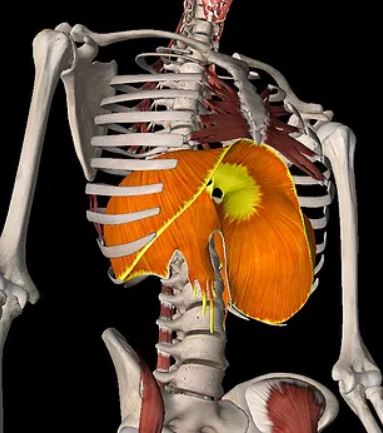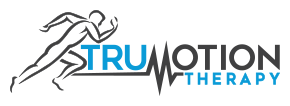December 4th, 2017
The Truth About Back Pain
BACK FACTS
- Low back pain (LBP) is the leading cause of disability worldwide.
- It’s estimated that around 80% of people will experience back pain at least once in their lives.
- Most instances of LBP are mechanical and do not require drugs or surgery.
X-RAY VISION
Having advanced diagnostic imaging has benefited the medical community tremendously, but  It can have unintended consequences. Let’s take a look at some numbers…
- 40% of 35 year-olds will have degenerative joint disease (DJD) on x-ray but will not have any pain.
- 30% of 30 year-olds will have a herniated disc on MRI but will not have pain.
Why do these numbers matter?  Let’s say a 30 year old with LBP goes to a doctor and gets an MRI. The MRI shows a disc herniation, and her LBP is blamed on the herniated disc.  However, the above statistics show that disc herniations frequently don’t cause pain.  Perhaps her back pain is being caused by tight hips that are putting stress on her back.  If she were to get surgery to repair the herniation, she would likely still be in pain, because the thing ACTUALLY causing her back pain was not addressed.
Imaging is great for ruling out serious pathology (cancer, fractures, etc.), but research (1) shows a skilled clinician can do the same by taking a thorough history.
What Causes Back Pain?
The causes of back pain are widespread. To keep things simple I like to break up the causes into 3 categories:
- Functional: poor movements habits, i.e. rounding your back when lifting something heavy; poor lifestyle habits, i.e. obesity
- Structural: arthritis, disc bulge/herniation
- Pathological: cancer, kidney stones, inflammatory bowel disease
Most cases of LBP are functional.  If functional issues, like lifting heavy objects with a rounded back, are not addressed they can lead to structural issues down the road (arthritis and disc herniations). Only about 1.4% of back pain cases are pathological.  These are very simplified categories, and there is certainly spill-over between groups.
So what happens when someone ‚Äúthrows out their back?‚ÄĚ We have all heard of people going down to pick something up, it can be a barbell or even a pencil, and throwing out their back. There are several things that can cause that excruciating pain and accompanied stooped posture.
- A herniated disc or sprained ligament.  In this case there was likely repetitive actions that slowly irritated the disc or ligament until the final injury occurred. The straw that broke the camels back if you will. Conservative care has been found to be effective at managing these cases.
- Alarm signal. ¬†Our bony spine houses a very important structure: the spinal cord. Because this bit of anatomy is so important to us our spine has an incredible alarm system. ¬†It will sound the alarm if it senses danger before something tears or breaks. That alarm signal is pain, and it’s there to protect us. This is likely the most common cause of acute back pain.
Setting the Record Straight!
There is a lot of misunderstanding around functional and structural causes of back pain. Common structural issues many people think cause back pain include a short leg, being out of alignment, and scoliotic curves.
- Short leg: A true short leg is where one leg bone is physically shorter than its partner on the other leg.  Leg length differences up to 1 cm are common and have not been shown to contribute to back pain.  A difference larger than that is very rare.
- Misalignment: Unfortunately a lot of chiropractors will still tell you the bones in your spine are out of place and need to be realigned. ¬†Not the case. ¬†Your spine is dynamic and meant to move. There are many things that can give the impression of misalignment like tight muscles or ‚Äústicky‚ÄĚ joints.
- Scoliosis: When looking straight on at someones back, a perfectly straight spine is dubbed as ‚Äúnormal‚ÄĚ.¬† The fact is, many people have slight curves to the right or left in their spine and don‚Äôt have any problems. As soon as pain arises, however, it‚Äôs easy to blame the pain on the curve. Even people with extreme scoliosis, upwards of a 50 degree curve, can live pain free lives.
Tips and Tricks
Mobility
There are key areas that tend to lack mobility on most people and can lead to LBP. ¬†These are the upper back and hips. ¬†When you go about your daily activities (walking, running, lifting, turning, etc.) you need a certain amount of mobility to perform these tasks. ¬†If you lack the requisite mobility in one spot your body is smart and will ‚Äústeal‚ÄĚ it from somewhere else. ¬†For example, when running your hip needs to be able to extend a bit behind your body. ¬†If you have stiff hips, that motion will come from the next closest spot, which is the low back. ¬†If you are torquing your low back with each stride, it’s no surprise you have pain!
Mobilize the upper back with this drill:
- Knees and hips bent to 90 degrees.
- Keep your knees together.
- The band not completely necessary.
Mobilize the hips with this drill:
-  Keep a neutral spine throughout the movements.
Stability
Just like the upper back and hips need to be mobile, the low back needs to be stable, meaning it should resist excess motion. ¬†Your low back should be stable enough to keep from: bending when you‚Äôre lifting something heavy, twisting too much while running, etc. ¬†A stable spine comes from a stable core. ¬†You will notice the core exercise below doesn’t involve a lot of movement. ¬†For those with back pain, traditional sit-ups may put too much stress on the spine and not challenge the abdominals enough. ¬†This exercise is proven to be safe on the spine and work the abs appropriately.
Stabilize the core with this exercise:
Breathing

You take around 20,000 breaths each day! The main muscle used in respiration is the diaphragm, but it also plays an important role in posture.  In the image to the right the diaphragm is highlighted orange. Notice its intimate connection with the low back.
Many people fail to use their diaphragm properly when breathing, which can result in instability and pain in the low back.  If the diaphragm isn’t being used for breathing we will recruit other muscles like those in the neck and upper back to take up the slack.  These muscles are not meant to be used for breathing and end up getting tight and sore. Sound like you?
- Sit with your shirt off in front of a mirror.
- Wrap your hands around the side of your stomach so your thumbs are near your back and finger tips are in front.
- Focus on feeling your breath in your hands.  This is not just belly breathing, because your breath should be felt 360 degrees around your lower torso.
- While doing this make sure your shoulders aren’t raising up and down with each breath.
- Try to use this method of breathing throughout the day.
The Big Picture
Although we have been focusing a lot on movement, there are many other things you can do to help manage or avoid back pain.
- Diet is key. Since the gut is physically, neurological, and chemically close to the spine, it’s important to eat clean, and eat an anti-inflammatory diet. A good source for which foods to eat can be found here.
- Quite smoking.  It’s not good for you or those around you.
- Hydrate!  The discs in your spine are 70% water.  Get a 32oz water bottle.  Fill it up at breakfast, and have it finished by lunch.  Fill it up again at lunch, and have it finished by dinner.
- Walking and running are therapeutic for the spine and recommended for those with back pain.
- Avoid staying in one position for too long.  This goes for sitting AND standing.
- If your low back is hurting make sure you’re moving through your hips to¬†spare your spine.¬†¬†This movement is called a hip hinge.
Back pain can be extremely debilitating and frustrating. The info provided here should be reassuring, however. ¬†Most forms of back pain are functional and not due to any structural abnormality like a short leg, scoliosis, degeneration, etc. ¬†That means you have control. Altering the way you move can have a tremendous effect on the pain you feel. ¬†Sometimes all you need is a nudge in the right direction, and that’s where a chiropractor comes in. ¬†With proper care you will be given the tools you need to get out of pain and stay that way without having to commit yourself to 3 office visits a week for the rest of your life!
Sources: 
1.  McGuirk B, King W, Govind J, Lowry, J, Bogduk N. Safety, efficacy and cost-effectiveness of evidence-based guidelines for the management of acute low back pain in primary care. Spine 2001; 26:2615-2622
2.  Liebenson, C. (2006) Rehabilitation of the spine: A practitioner’s manual. 2nd edn. Baltimore, Mar.: Lippincott Williams and Wilkins.





